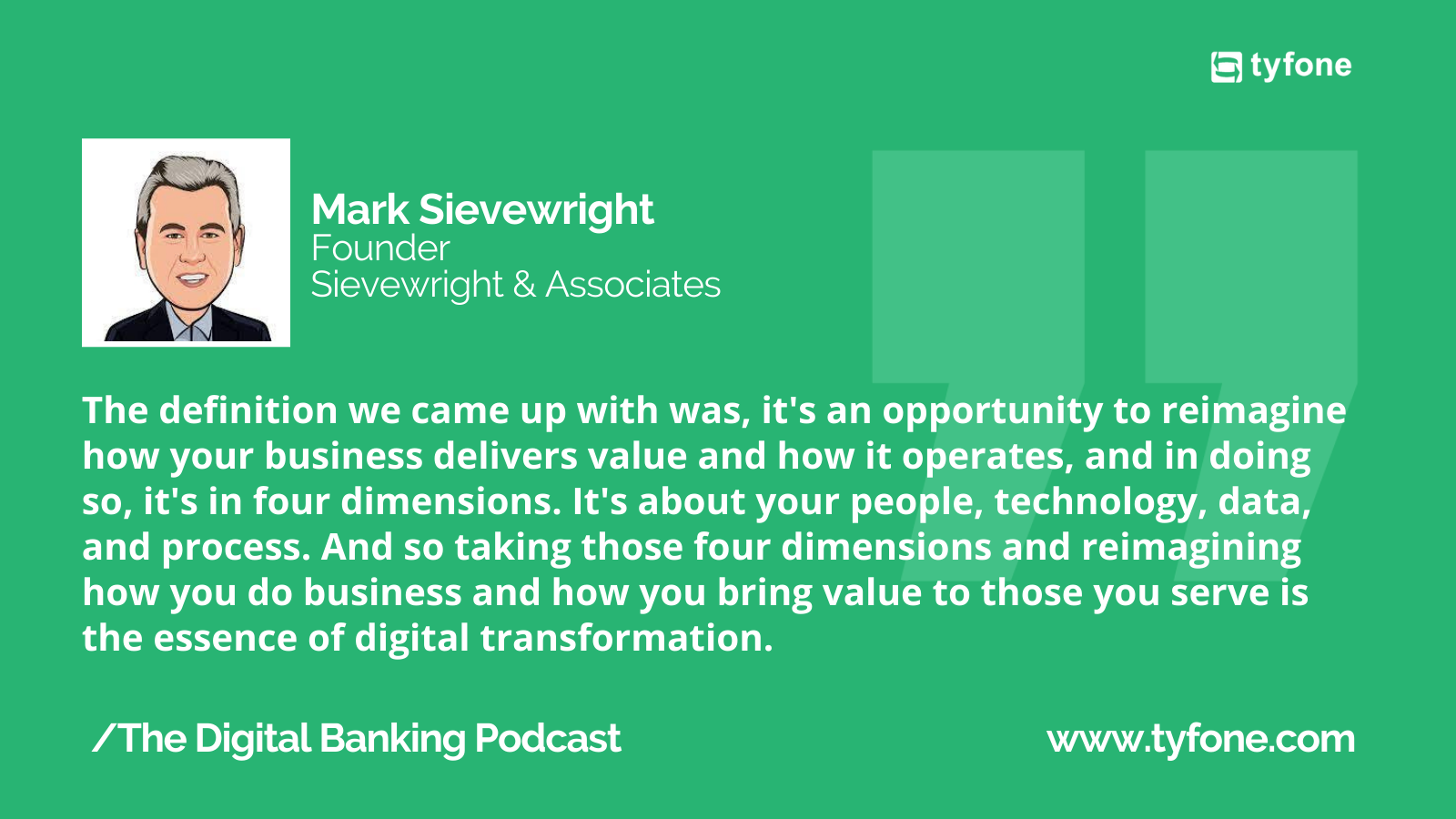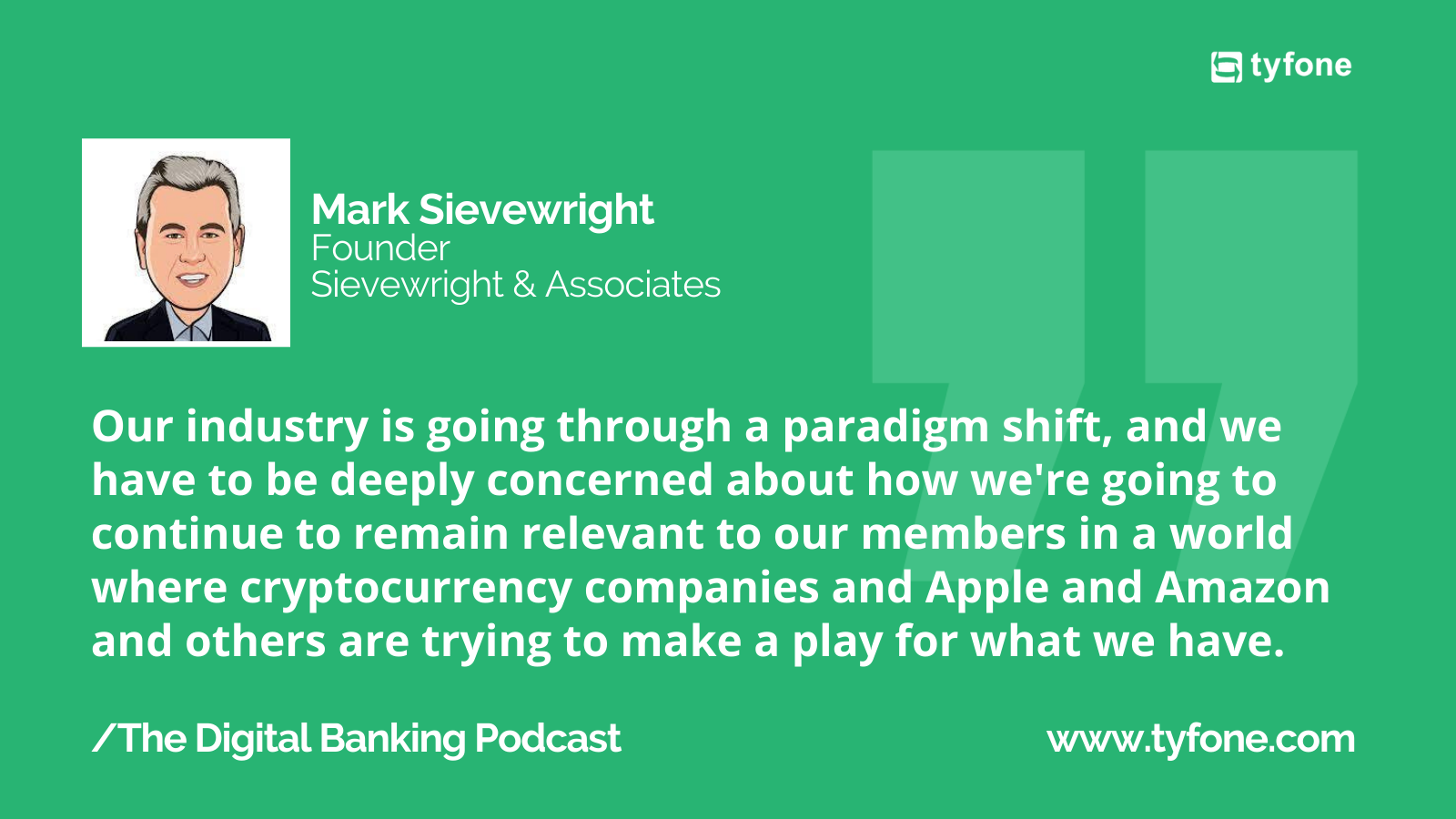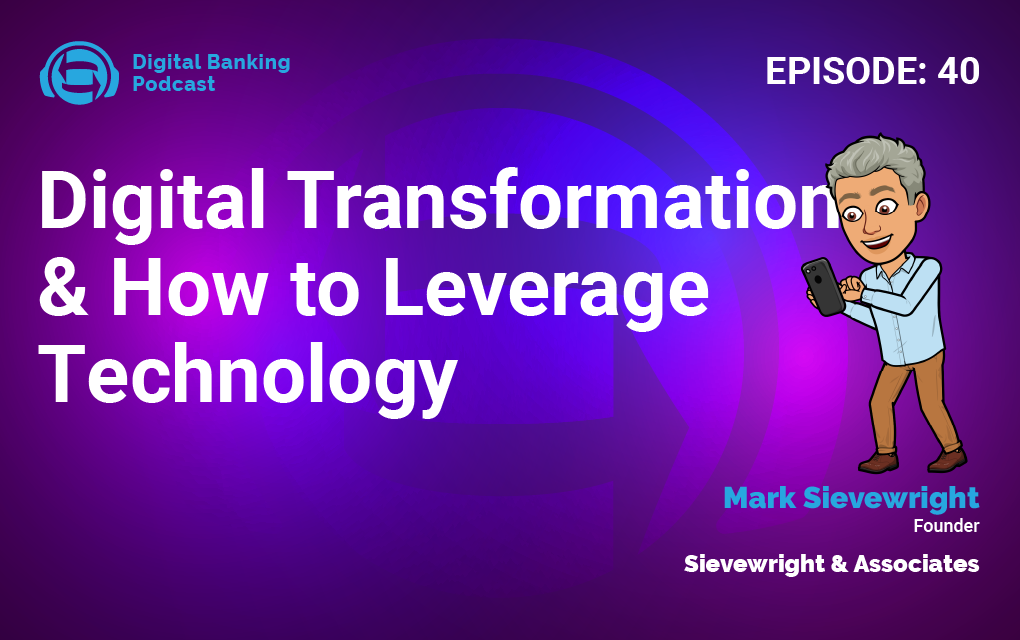What Is Digital Transformation and Why Is It Vital for Community-Minded FIs?

Mark Sievewright
Founder
- Digital transformation required a focus on four areas: people, data, technology, and process.
- Data is the most valuable asset credit unions have. Therefore, one objective of any digital transformation roadmap must be to become a data-driven organization.
- The days of “check list” technology plans are long gone. Every single technology decision must be addressed from a strategic perspective.
According to Sievewright, it’s important for FIs to look broadly at technology and its impact on the consumer experience. ”I help my clients zoom out when, most of the time, they’re forced to zoom in,” he said. “What I mean by that is that many executives are incredibly busy with driving initiatives forward. They’re focused on today’s to-do list or this quarter’s strategic initiative. And they’re not always thinking about the bigger picture in terms of zooming out and seeing a trend — potentially a paradigm shift — that’s beginning to happen. We’re starting to see several paradigm shifts taking place in our industry.”

Digital Transformation in the Finance Space Involves People, Technology, Data, and Process
Sievewright addressed the topic of digital transformation as part of his work on Digital Life, which he co-authored with Guillermo Kopp of Microsoft. The two discussed the definition of digital transformation in their first working session. As a result, they determined four dimensions through which digital transformation must be observed: people, technology, data, and process.
You may meticulously plan change, but it’s your people who actually drive change. Therefore, the success of digital transformation depends on a high-quality workforce. ”We’ve got to make certain that we have the right mix of talent and skills inside our organization to execute the transformation,” said Sievewright
The second piece is technology. It seems obvious to say that digital transformation relies on technology. However, it’s important to consider how you actually think about technology. “We have to understand what technological resources we need to bring to bear and what we can afford to bring to bear inside our organizations,” said Sievewright. “Whatever we do with technology has to be a function of our resources to both acquire and consume it. We need a very clear technical understanding as part of the transformation.”
The third dimension Sievewright talked about is data. He emphasized the need for all FIs to become data-driven in order to provide a top-notch experience to both internal and external users. ”We are probably one of the most data-rich organizations on the planet,” noted Sievewright. “We know more about our accountholders than most businesses know about their customers. The challenge is that data is often sitting in different places inside our organization.”
In a sense, process improvement – making every experience as frictionless as possible for accountholders and employees – is the ultimate goal of digital transformation. It’s important to recognize that even the best technology can’t improve a bad process. ”I bet you’ve never seen a situation where technology makes a bad business process better,” noted Sievewright. “In other words, if we have a bad business process and we just port that to new technology, well, guess what, the new technology is not going to work.”

What Financial Institutions Can Learn from Giants Like Amazon and Apple
Jeff Bezos, Elon Musk, and Steve Jobs are globally recognized visionaries and innovators. Is there something FI executives can learn from these non-bankers? According to Sievewright, the answer is yes.
He said that financial institutions have plenty of one ingredient that all these titans of technology rely on for the continued success of their companies: data. ”We have the opportunity to be perhaps the most data-driven organization in corporate America because we do have diamonds in our backyard,” said Sievewright. “There are also business processes and tools that we can use to make sure that we can leverage that data.”
While there are plenty of lessons to be learned from the big technology companies, now FIs are forced to look at them as a new breed of competitor. For example, the introduction of the Apple Card has, in some ways, revolutionized the finance space. The company famous for producing smartphones managed to reinvent credit cards — something traditional FIs weren’t able to do in 50 years. How?
”They had a clean sheet of paper. They were thinking seriously about what consumers need. They didn’t have the anchor of legacy businesses and legacy technologies. And they also had an incredible leg up in terms of the massive smartphone distribution and the affinity that people have for Apple products,” concluded Sievewright.
The bottom line is that community financial institutions have everything they need to thrive at their disposal – the technology, the data, the accountholder relationships. They just need to approach digital transformation thoughtfully, ensuring that they leverage all these tools to the maximum benefit of their employees and their accountholders.

